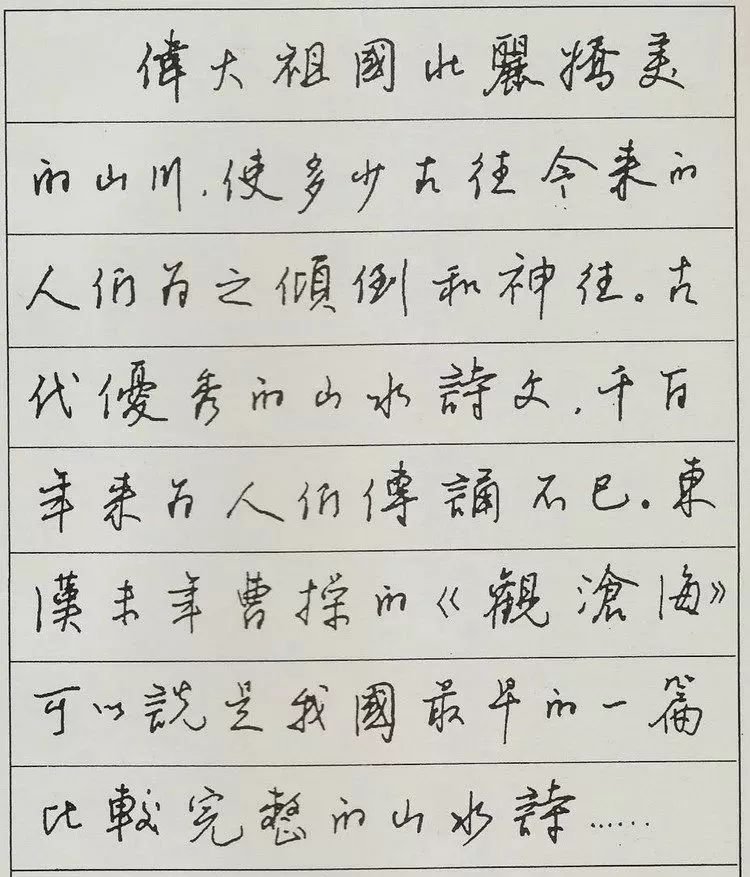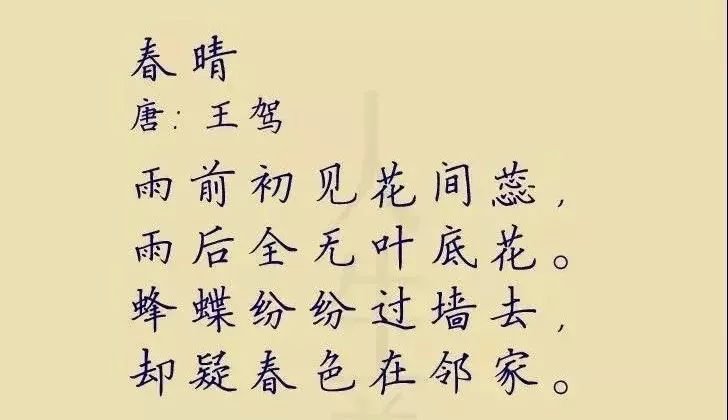It is generally easier for some primary school students or teenagers to practice handwriting well than for adults. Because their fonts have not yet been finalized and they are easy to accept new things and new ideas, they can generally achieve better results in a short period of time. But a common problem among them is that their understanding and acceptance are worse than adults. They can write seriously when practicing calligraphy. However, they still stick to their old habits and do not understand the characteristics and charm of calligraphy. Therefore, this is also a problem in practicing calligraphy. Something that should be avoided as much as possible when practicing hard-tipped calligraphy.

For adults, the font has been basically finalized, and it seems difficult to practice hard-pen calligraphy well. Adults are most likely to practice hard-pen calligraphy around the age of 40. Their previous wrong writing habits have been repeated for 30 years and are difficult to correct in the short term. After many adults become successful in their careers, they gradually begin to notice their second image, and therefore they also work hard to practice hard-pen calligraphy. I bought a lot of copybooks and spent several hours every day practicing calligraphy. However, the results achieved were very small, and some even got worse and worse with practice, and they had to give up in the end.
They have fallen into a misunderstanding when practicing hard-pen calligraphy. They think that by writing repeatedly and putting in the same effort as what is written on the copybook, they can write hard-pen calligraphy well. In fact, this is not the case. If you want to write hard-pen calligraphy well, you must master some characteristics of hard-pen calligraphy and learning methods, so that you can make great and obvious progress.
If adults want to write hard-written calligraphy well, they should pay attention to the following issues:
First, when practicing, should I copy the calligraphy, copy the calligraphy, or copy the calligraphy?
Tracing is a method often used by adults to learn hard-pen calligraphy. An important feature of tracing is passive practice, which is a mechanical repetition of an action. This is completely different from practice making perfect. We know that when we ask ourselves to draw a painting, we can basically draw an accurate picture of it, but when we are asked to draw a gourd and a scoop, we often cannot even draw a three or four-point pattern. Even if you trace dozens of times, your painting level has not improved. Because tracing is mechanical, the brain's learning component is only secondary. To write good calligraphy, you must pay attention to "the intention comes first", that is, you have the image of the calligraphy in your mind and then write it out. The opposite is true for tracing. Good writing cannot produce conditioned reflexes in the brain, so after leaving the copybook, the writing is still the same as before.
Copying posts is a misunderstanding. What you care about every day is just the quantity. After copying it dozens or hundreds of times, the words on the copybook are the same and what I write is another. This practice method is nothing more than "copying homework" and you won't learn much. Quantity and quality are not the same concepts, so copying is actually the text on the copybook, not the calligraphy on the copybook. What you copy is still your own handwriting, and what you repeat is still your own mistakes.
Lin Tie is a more important learning method. But you must understand the essentials of posting. There are several key points that you need to know:
1. Be careful when posting. Applying with your heart, using your eyes, and using your hands are not the same results! Practicing the copybook with your heart requires you to use your brain to think about how the words on the copybook are written, what the strokes are like, and what the combination is.
2. Compare the temporary posts. After the first pass, you should go back and compare with the original post. After you find the shortcomings, write again, compare again, and repeat until you are done. Otherwise, repeating it over and over again will reinforce your mistakes.
3. When writing a post, the intention should come first. This means that you need to have an image of the character in your mind before writing, so you need to read the copybook frequently and remember how the characters in the copybook are written. The more you read it, the more familiar it becomes. "Read thousands of volumes and write like a god" is still important for calligraphy.
Second, forget your previous fonts and practice the basics in a down-to-earth manner.
If adults want to learn calligraphy thoroughly, they must forget their previous handwriting, realize the ugliness of their own handwriting, and even feel disgusted and disgusted with their own handwriting. Then start from scratch, starting from the most basic dots and strokes, and then to the structure. This should be the case for temporary posts. When writing, you should still write in the same way as when you practice hard-pen calligraphy. No matter how slow you are, you must forget your previous font.
Third, correct the structure
For hard-pen calligraphy, the structure must be corrected first. Regardless of whether you are using a hard pen or a soft pen, you must first adjust the structure. The quality of the structure directly affects the overall effect of the characters. Choose a regular script copybook that you like, but this copybook must have good calligraphy and beautiful calligraphy. You are not required to write regular script well, of course it is best if you can write regular script well. The function of the regular script copybook is to straighten the glyphs, adjust the structure, and lay the foundation for writing pen calligraphy in the next step.

Fourth, create a sense of interest
Write a few words before practice, and then write the same few words after practice, and compare the effects. If the effect is obvious, your interest in writing will be greatly increased. Often, the practice effect is very good in the beginning. After this period of high interest, it enters a period of depression, with slow progress, little effect, and slowly declining interest. Therefore, we must realize the progress, realize the advantages, and cultivate interest. Only in this way can we practice hard calligraphy well.
You may not become a calligrapher by practicing writing, but you can improve your writing skills by practicing calligraphy.








